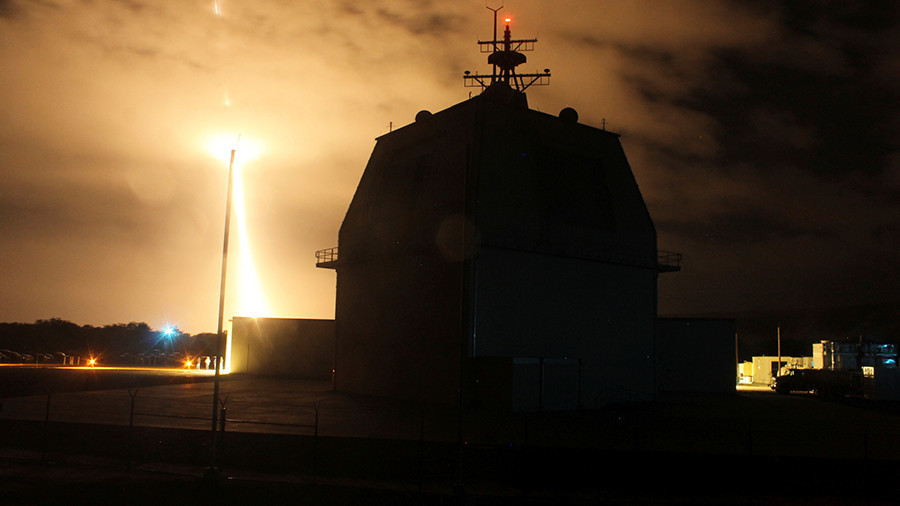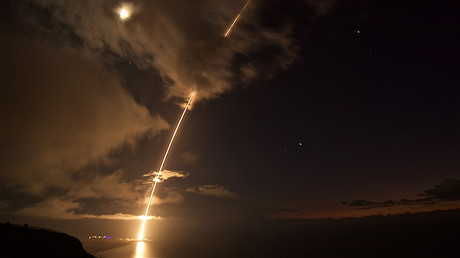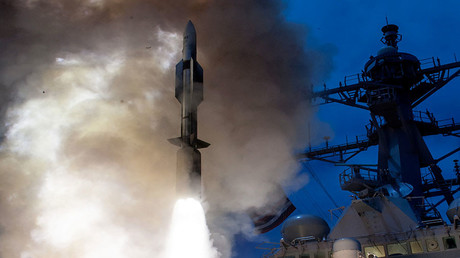Is Japan aiming its US-bought missile systems at Russia & China?

Japan’s efforts to acquire the US missile defense systems under the pretext of a threat posed by North Korea have sparked concerns in Moscow. Experts believe the missiles might be deployed with an eye on Russia and China.
Japan says that its decision to boost its ballistic missile defense system by approving the purchase and deployment of two Aegis Ashore batteries has been driven by an “urgent threat” posed by Pyongyang. The US made-batteries expected to become operational by 2023 were approved in December and cost the country $ 2 billion.
Defence Minister Itsunori Onodera’s remarks that Tokyo could use Aegis Ashore not only against ballistic missiles, but a greater range of targets such as incoming cruise missiles, have raised serious concern among Japan’s neighbours.
The system’s deployment is likely to be conducted with regard to concerns about China and Russia, believes Jeff Kingston, the director of Asian Studies at the Temple University, Japan.
“Clearly the most urgent threat is from Pyongyang so that is driving this decision but this deployment has wider implications given concerns about China and Russia given their more advanced capabilities,” he told RT via email.
On the other hand, Dr. Joseph Gerson, the president of the Campaign for Peace, Disarmament and Common Security argues that a potential North Korean missile attack which Tokyo claims to be defending itself against is in fact “unlikely,” although not completely impossible, and adds that Japan’s missile program is apparently “designed to defend the island nation and US military bases from possible future Chinese or Russian missile attacks.”
Justifying military buildup at what cost?
Meanwhile, a former diplomat says that Tokyo is apparently exploiting tensions in the region to justify its own military buildup.
“Of course, Japan will say [the missile defense program] is just directed against North Korea, when everyone knows the chances of North Korea seeking to attack Japan are minimal,” said Gregory Clark, a former Australian diplomat and a specialist in international relations and security.
Japanese Prime Minister Shinzo Abe needs these tensions to justify the defence legislation overhaul he advocates, as well as to enhance Japan’s military capabilities and its military role abroad in particular. Such policy pushes him right into the arms of the US and makes Japan an active supporter of the US military strategy in the region and beyond, Clark explained.
“Incidentally, Mr. Abe is making a totally unnecessary visit to the Baltic states to show his support for US and NATO policies in Europe,” he added.
This policy could also potentially put Tokyo on a collision course with Moscow, he warns, adding that the US missile defence systems could become a “matter of adding weight to and contributing to overall Western policies” that involve “putting pressure on alleged adversaries, including Russia.”
Deployment of Aegis Ashore in Japan could push Moscow into even closer cooperation with Beijing aimed particularly at countering pressure exerted by the US and its allies, Clark said, and threaten the Russian-Japanese dialog about the disputed Kuril Islands.

The future missile deployment has sparked concern in Moscow. On Monday, Russian Foreign Minister Sergey Lavrov said during an annual Q&A that the systems deployed in Japan could be used for offensive purposes and fall under full control of Washington.
Lavrov’s statement comes on the heels of a Japanese media report that the missile defence systems were particularly designed to be a deterrent against Russia in the region, and that their deployment fits the US strategy on countering Moscow. The report cited an unnamed Japanese defence official, who said that the missile systems’ deployment was aimed at “curbing” Russia’s missile capabilities “to its east.”
Moscow is skeptical about Japan’s assertions that the missile systems would be controlled by Tokyo.
“We have heard that it will be Japan that will allegedly operate this system, and the United States will have nothing to do with it, but we have serious doubts that it is so,” Lavrov said on Monday.
Aleksandr Zhilin, a retired Russian Armed Forces colonel and a military reporter, believes such concerns are justified. It is highly unlikely that Japan would control the US missile systems, he told RT in a phone interview, adding that all such statements are apparently designed to serve as a disguise. The US is behind the deployment and it clearly does it with an eye on Russia and China, he claims.
‘Means for pre-emptive strike’
Apart from being an apparent deterrent against such countries as Russia and China, deployment of the US Aegis Ashore missile defense systems in Japan potentially has another far-reaching implication that could further complicate already tense security situation in the region. These systems could presumably be used both as a cover for and as a means of a pre-emptive strike by the US and its allies.
“Given that so-called missile defenses can also serve as the shield for first strike swords, neighbouring nations will understandably see missile defences as potentially offensive weapons,” said Gerson of the Campaign for Peace. The deployment would mark another step in a regional armed race that only increases tensions and puts the regional powers on the brink of a “catastrophic war,” he believes.
Zhilin notes that the Aegis capabilities are limited and the system doesn’t pose any challenge to Russia, as it has “effective penetration aids.” Its deployment in Japan actually nullifies Japan’s security instead of enhancing it, as it becomes a potential target for missile strikes precisely because of the existence of these systems on its territory.
However, Aegis Ashore is not just a defensive weapon that could be used to weaken a potential retaliatory missile strike, thus making a pre-emptive blow a more plausible option in case of a conflict between major powers. It can also be converted into an offensive weapon.
Derived from a naval antiballistic missile system, Aegis Ashore launches interceptors using a variant of the Mk 41 VLS vertical launch system. The same system is used by the US Navy to launch Tomahawk cruise missiles that could be equipped with nuclear warheads.
Deployed in Japan, these launchers would have most of China’s developed coast area, as well as Russia’s Sakhalin and Primorsky Kray regions within range, if loaded with Tomahawk missiles.
Further military buildup in fact does not serve the interests of any regional players as it would only lead to further escalation of tensions and damage earlier agreements, Gerson noted. Exerting pressure on each other is also just another dead end.
“It is an urgent necessity for the nations of Northeast Asia, as well as the United States, to end regional arms races, military threats and provocative military exercises,” Gerson said, calling “common security diplomacy” the “best way forward.”
“It is … difficult to envision meaningful pressure being placed on Japan to abandon its missile defence program,” he added. “Rather than pressure … common security negotiations leading to the creation of a Northeast Asia Nuclear Weapons Free Zone would be far more effective.”



0 Comments:
Post a Comment
Subscribe to Post Comments [Atom]
<< Home